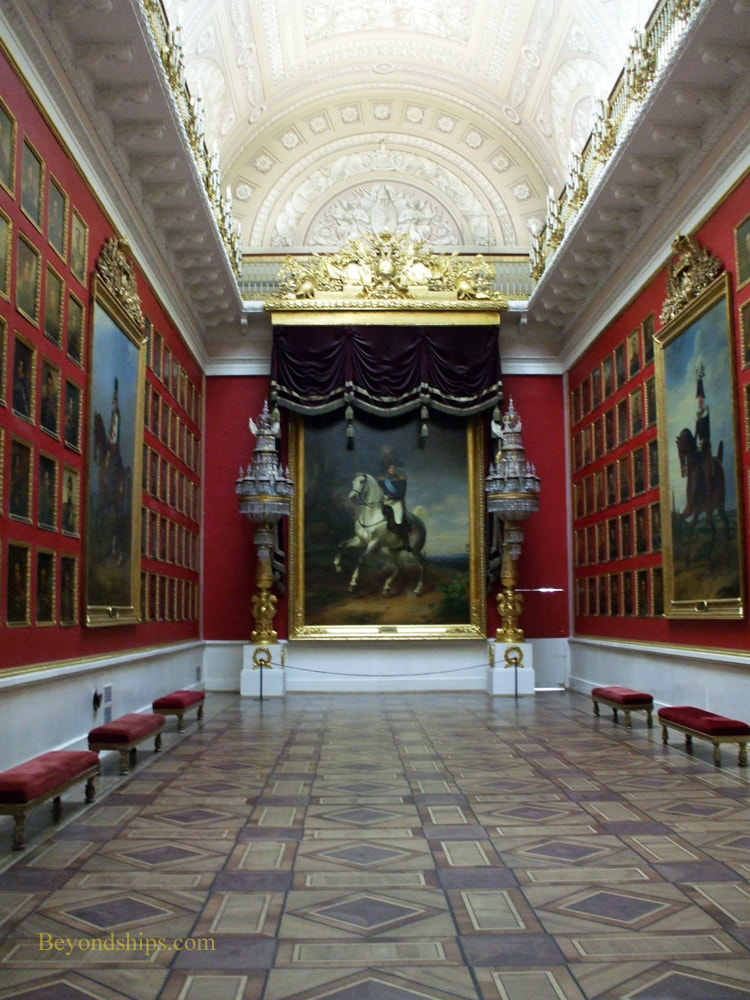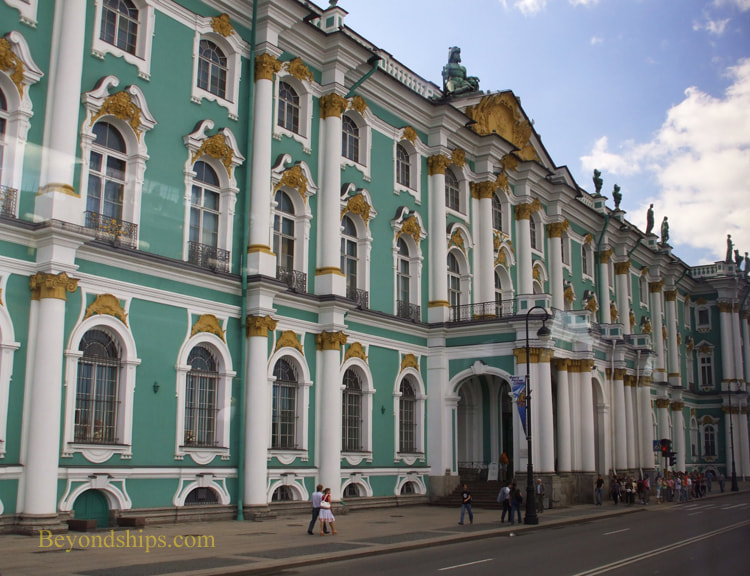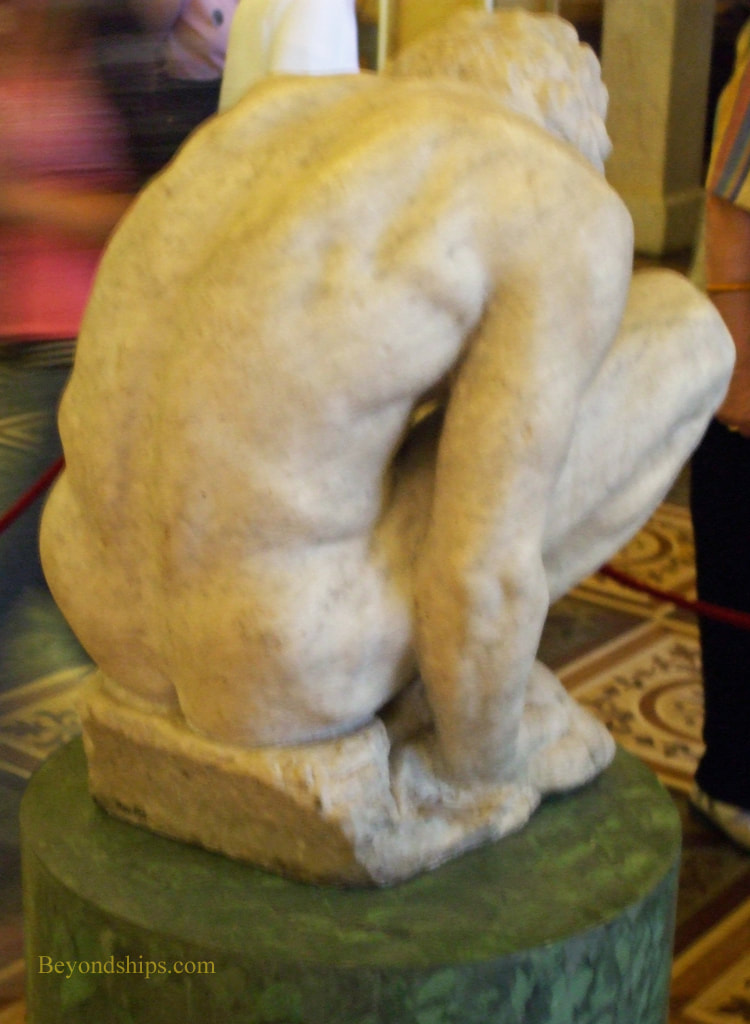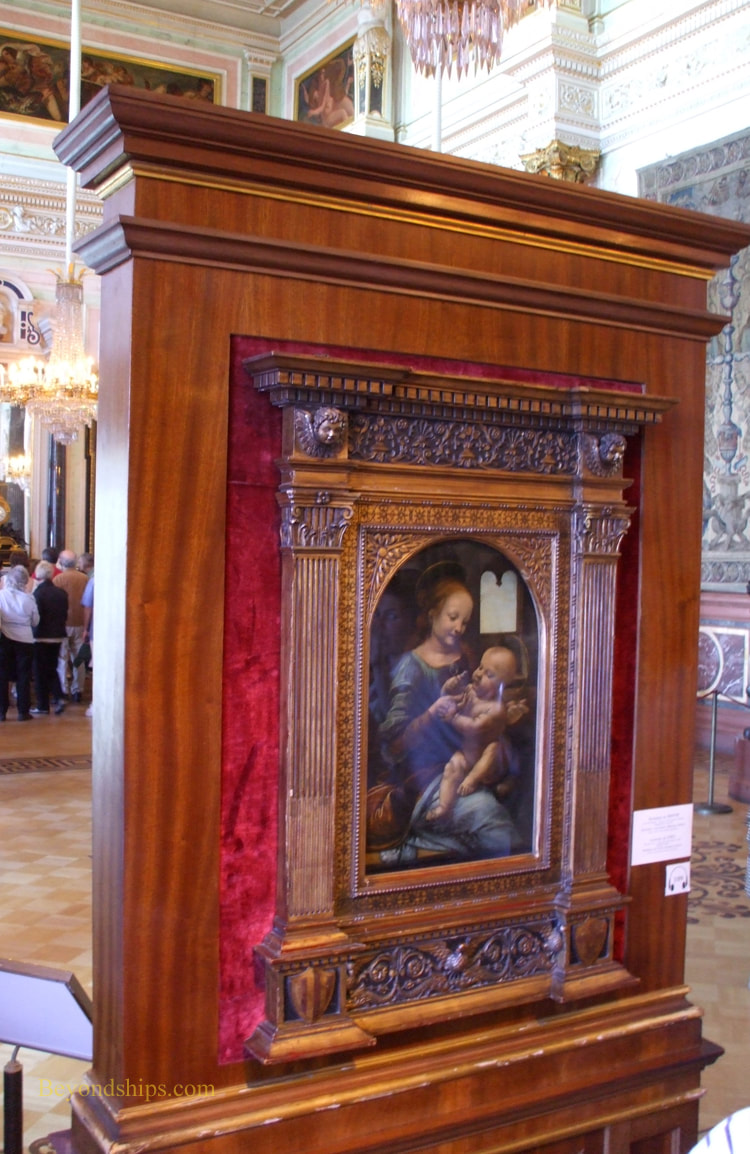|
The Hermitage, more properly “the State Hermitage Museum” in St. Petersburg, Russia is one of the world's great museums. Its collections include over three million pieces of art. In addition, it is housed in a complex of historical buildings that includes the primary palaces of the Russian Imperial, family.
Catherine the Great is usually credited with founding the Hermitage. In the 18th century, Catherine undertook to create a first-class art collection. She enjoyed art but her purpose was political as well. At that time, Russia was regarded by many in Europe as somewhat backward and uncultured. By creating a great art collection, Catherine hoped to put the Russian throne on the same level as those of the great Western European powers and establish a reputation as an enlightened sophisticated patron of the arts. Durinh her lifetime, Catherine collected more than 4,000 paintings as well as numerous drawings, gems, and other works. To house the collection, she had galleries constructed next to the Winter Palace, the Imperial residence in St. Petersburg. This neoclassical building is now known as the Small Hermitage. Because her collection grew to exceed the capacity of the Small Hermitage, she built another extension that is called the “Old Hermitage.” gre She also had a theater constructed that is today, the Hermitage Theater. In the years that followed, the Imperial collection continued to expand. One notable addition was the acquisition in 1815 by Alexander I of the collection of Empress Josephine de Beauharnais, the first wife of Napoleon. A fire damaged the buildings which contained the Imperial collection in 1837. Nicholas I commissioned Vasily Stasov to restore and redesign the galleries. In addition, he commissioned Leo Von Klense to construct yet another building, which has come to be known as the “New Hermitage.” Up until this point, the Imperial collection was private and could only be seen by the Imperial family and certain members of the court. However, Nicholas I, impressed by the great public museums in Western Europe, decided to open the Imperial collection to the piblic and in 1852, the Hermitage became Russia's first public museum. During the Revolution of 1917, the Winter Palace was stormed by the revolutionaries. Following the revolution, the new government declared the Winter Palace and its associated buildings a state museum. At first, the museum's collection grew as the Soviet's confiscated various private collections and works from other museums were amalgamated with the Hermitage collection. However, in need of money, the Soviets secretly sold off works including masterpieces by Raphael and Titian. When Germany invaded Russia during World War II, most of the Hermitage collection was taken elsewhere in Russia. This proved a wise precaution as the Hermitage buildings were hit by two bombs and by shells during the Siege of Leningrad. The museum reopened in November 1945. Works of art looted by Soviet troops in Germany and Eastern Europe were held at the Hermitage in secret until the fall of the Soviet Union. Some of these have now been publicly displayed. In 1948, some 300 Impressionist and Post-Impressionist works were transferred to the Hermitage from the Museum of New Western Art in Moscow. These along with acquiitions and donnations have made the Hermitage collection very strong in Impressionist and Port Impressionist art. The main part of the Hermitage today includes the Winter Palace, the Old Hermitage, the New Hermitage, the Small Hermitage and the Hermitage Theatre - - all of which are along the banks of the Neva River in the heart of St. Petersburg. In addition, the Impressionist works are on display in the neighboring General Staff Building. Because the museum is made up of a number of buildings, it can be confusing to navigate. However, this inconvenience is more than made up for by the sumputous decoration, which has survived in some of the rooms. Even with its array of palaces, the buildings are not enough to display the entire collection. Therefore, the collection is displayed on a rotating basis. In addition, the Hermitage has established a number of satellite museums, such as the Hermitage Amsterdam, where parts of its collection are exhibited. The Hermitage collection is particularly strong in a number of areas. Its collection of Western European painting is comprehensive and includes works by almost all the great masters. It has more than 100,000 from ancient Greece, Rome and Egypt. As above, the Hermitage is also very strong in Impressionist and 20th century art. For information about visiting, see The Hermitage website. |
The collection includes works by Michelangelo (above) and Leonardo (below).
|
Places to see art - - St. Petersburg, Russia - - The Hermitage Museum



